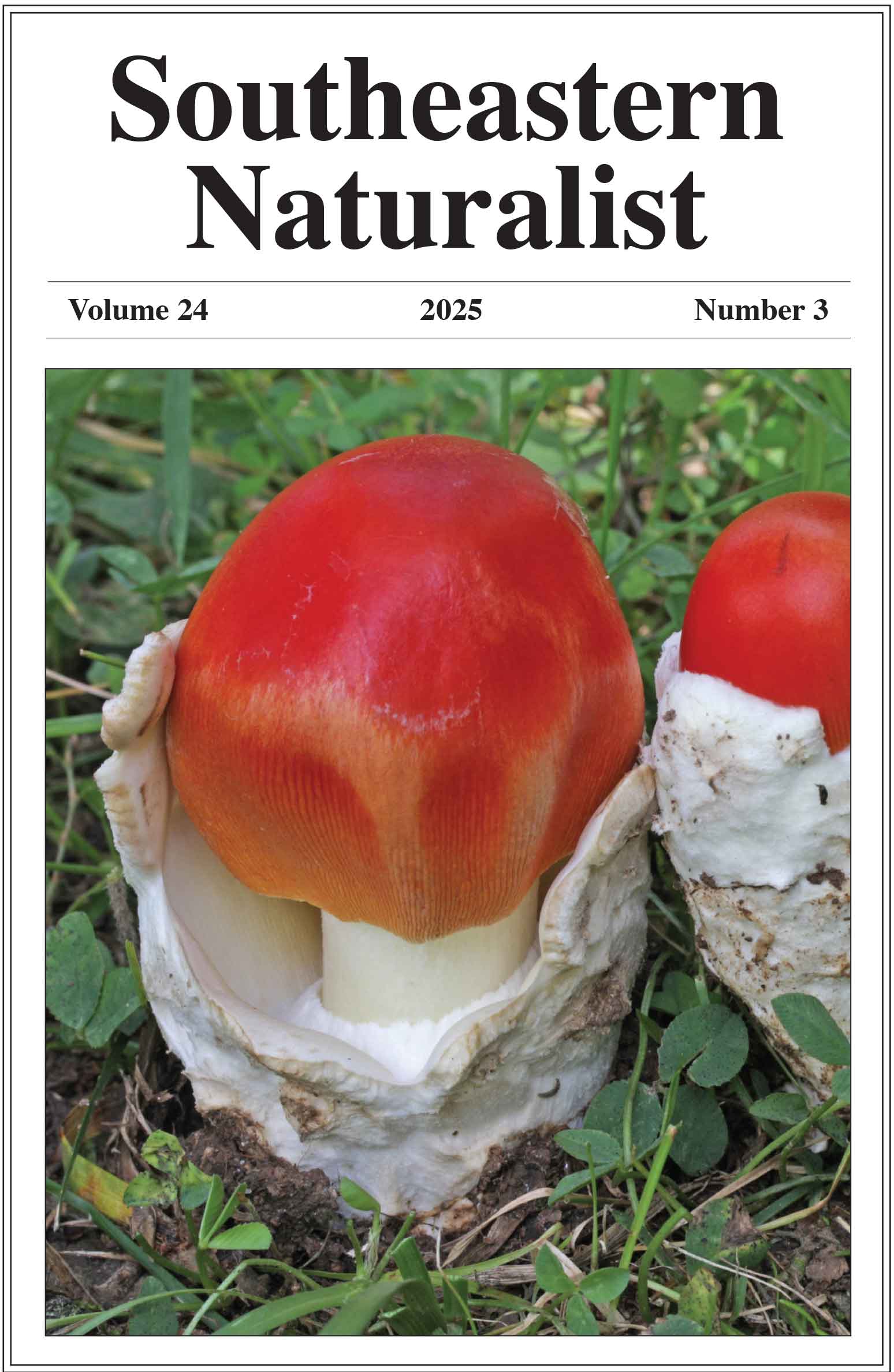Review of the Biology, Life History, and Ecology of Spot, Leiostomus xanthurus, and a Comparison between the Gulf of Mexico and the Western North Atlantic Populations
John J. Govoni*,
*College of Agriculture and Applied Sciences, Department of Applied Ecology, North Carolina State University, Center for Marine Sciences and Technology, 303 College Circle, Morehead City, NC 28557.
Southeastern Naturalist, Volume 24, Monograph 212 (2025): 1–30
First published early online: 10 May 2025
Abstract
Leiostomus xanthurus (Spot) is a coastal, sciaenid fish of the northern Gulf of Mexico (GOMEX) and the Western North Atlantic (WNA). With its life-history characteristics and ecology, Spot has become a model for estuarine dependance. The distribution of Spot is largely disjunct, and while genetic exchange between populations in the GOMEX and the WNA is possible, it is likely minimal. Some life-history traits differ between the GOMEX and the WNA populations. Spot reach sexual maturity at a younger age in the GOMEX than in the WNA. Earlier age at maturity in the GOMEX might be associated with higher temperatures. Overall, growth rates are higher in the WNA than the GOMEX, but vary greatly within both regions. Length at age and life span of the species are generally greater in the WNA than in the GOMEX. The ecology of Spot is similar in the GOMEX and the WNA. Climate change and concomitant sea-level rise could affect the distribution of Spot and the location of spawning given rising seawater temperature. The well-documented use of estuarine habitats, especially seagrass meadows and salt marshes, by juveniles might also be affected by sea-level rise.
![]() Download Full-text pdf (Accessible only to subscribers. To subscribe click here.)
Download Full-text pdf (Accessible only to subscribers. To subscribe click here.)
Access Journal Content
Open access browsing of table of contents and abstract pages. Full text pdfs available for download for subscribers.
Issue-in-Progress: Vol. 24( 4) ... early view
Check out SENA's latest Monograph and current Special Issue in progress:













 The Southeastern Naturalist is a peer-reviewed journal that covers all aspects of natural history within the southeastern United States. We welcome research articles, summary review papers, and observational notes.
The Southeastern Naturalist is a peer-reviewed journal that covers all aspects of natural history within the southeastern United States. We welcome research articles, summary review papers, and observational notes.